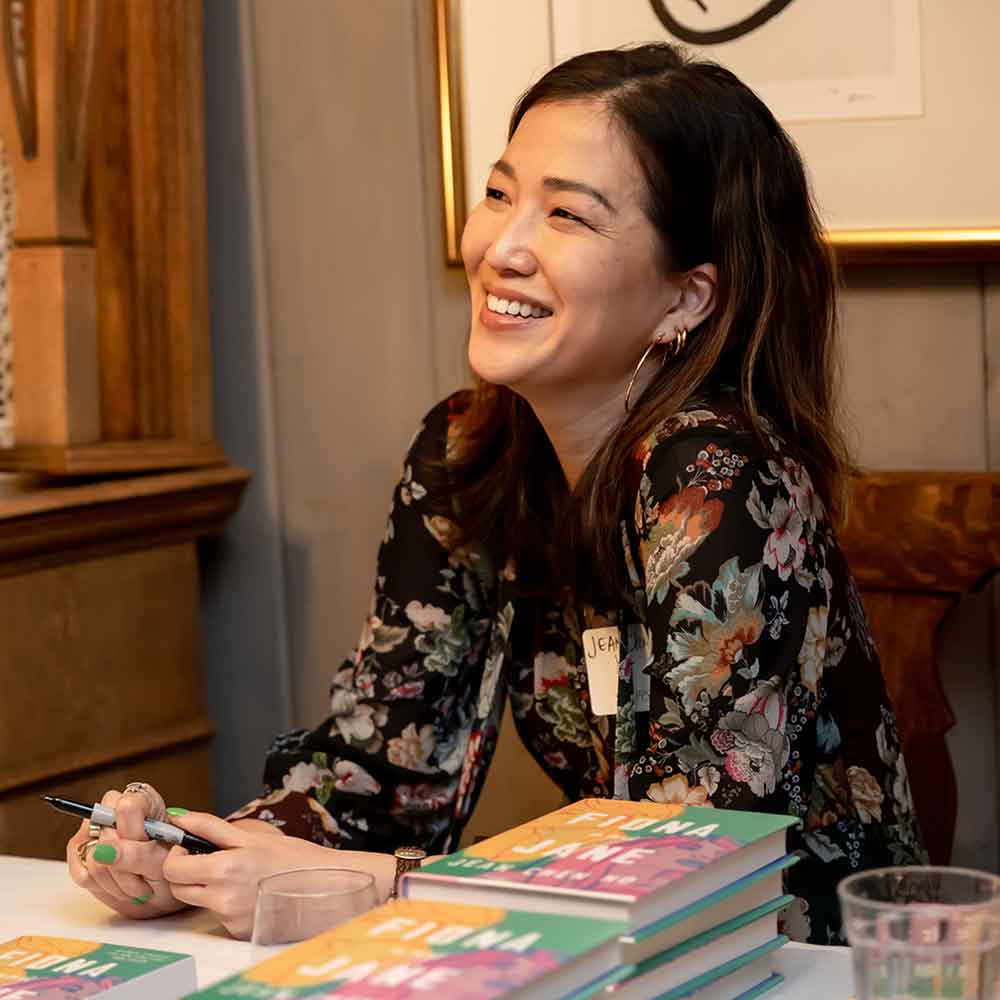By Rachael Warecki ’08

For Jean Chen Ho, writing workshops are “a special kind of classroom,” where vulnerability, care, honesty, and reciprocity all play vital roles. It’s the kind of classroom she cultivates as the 2023 Mary Routt Chair of Writing, teaching a course focused on the ways an author’s politics can be refracted through the reading and writing of fiction.
“Writing is a solitary activity, but finding community in like-minded thinkers and readers can be so wonderful in the writing process,” Ho says. “In all my classes, I want students to gain a greater sense of themselves and their own work, to learn how to see themselves more clearly and with more careful attention.”
The Mary Routt Chair of Writing is named for journalist and former College Trustee Mary Patterson Routt, whose generosity has enabled the Scripps College Writing Program to invite a nationally recognized professional writer to serve as visiting faculty each spring. Ho is the author of Fiona and Jane, an acclaimed novel in stories, which was named a Best Book of the Year by NPR and one of TIME’s 100 Must-Read Books of 2022. In addition to earning her MFA from the University of Nevada, Las Vegas, she received her PhD in creative writing and literature from the University of Southern California and has been awarded residencies and fellowships at Kundiman, Hedgebrook, MacDowell, Tin House, the I-Park Foundation, and the Vermont Studio Center. Her next book project, which has received support from the Huntington Library’s W.M. Keck and George and Arlene Cheng Research Fellowship, will explore gender and racial violence in 19th-century Los Angeles Chinatown.
Ho’s time in MFA and PhD programs, the latter of which required a critical dissertation in addition to a book-length creative work, provided her with additional lenses through which to view her own work and that of others—a thought process she’s sharing with her students this semester.
“Learning to read critical theory gave me a new language to describe my creative work and a way to situate my projects within a political, literary, historical, and social framework,” she explains. What’s more, two of her favorite writers and mentors in her PhD program, Danzy Senna and David Treuer, previously served as Routt Chairs in 2014 and 2011, respectively.
“I felt very fortunate to have followed in their footsteps,” she says. “They’d both said how much they enjoyed the opportunity to work with Scripps students in an intimate workshop environment.”
Ho is especially excited to teach a class on writing fiction that engages politics, based on Toni Morrison’s theory that “the best art is political, and you ought to be able to make it unquestionably political and irrevocably beautiful at the same time.” Ho and her students explore this theory through reading and writing that engages the politics of race, class, gender, and sexuality.
“The goal isn’t to write with a necessarily political agenda, but to raise questions about relationships of power, whether personal or structural, community or global,” Ho explains. “Literature as an art form lives in the same world we do, and not some abstract place free of historical context or moral/ethical contingencies. What’s our role as readers and writers of fiction in 2023 when it comes to our political convictions?”
She also wants to “demystify” the writing process for her students. The act of shepherding a story from idea to publication always involves the same steps: crafting a less-than-perfect first draft, to bowdlerize Anne Lamott (those familiar with Lamott’s Bird by Bird know the pithier, cruder phrase often used for this part of the process), then working on revisions that clarify the work. Ho wants her students to know that it’s not a process that becomes easier or faster with more experience.
“There are days it feels difficult to put words down on the page, and then there are times when ideas flow more easily,” she says. “I try to approach my work with a capacious perspective toward time: It might not get done today, but if I show up tomorrow, and the day after, and next week, something will shift, eventually. That’s the hope, anyway.”
Although the writing process may be long and difficult, and the path to publication equally arduous, Ho advises her students to explore the issues, subjects, and characters to which they’re most drawn. That level of engagement with their craft, she explains, will give their writing its unique creative spark—a quality that will be evident to readers as well.
“Write toward what interests you, no matter if you think no one else might care about it,” she says. “The precision of care and attention you give to your subject matter is what makes it come alive.”

